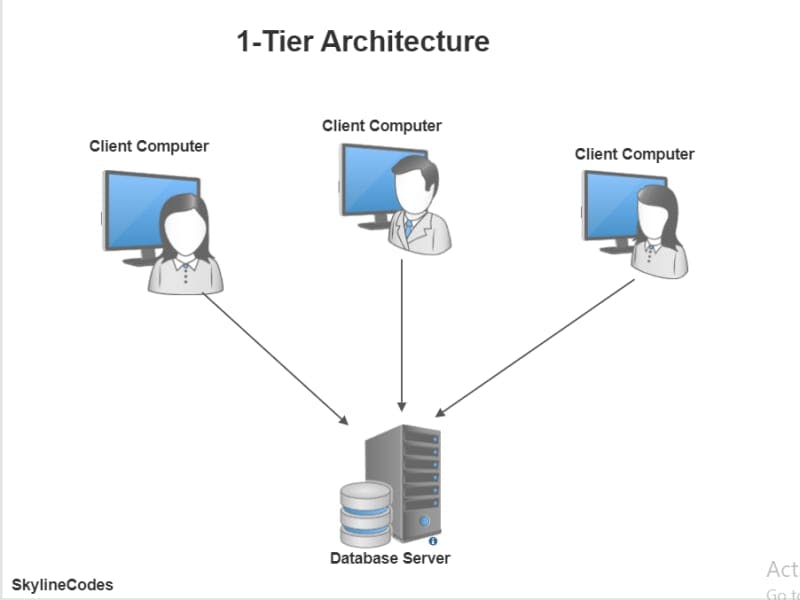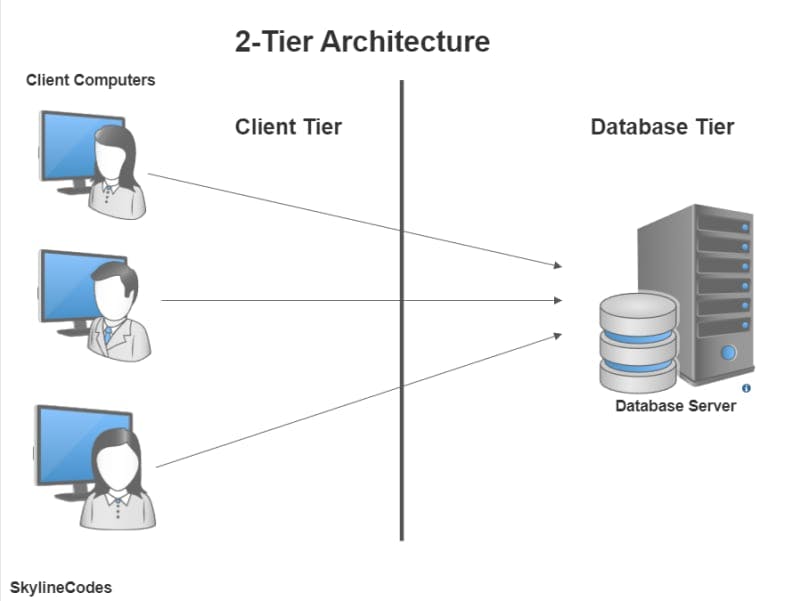What is Client Server Architecture?
The client-server architecture refers to a system that hosts, delivers, and manages most of the resources and services that the client requests. In this model, all requests and services are delivered over a network, and it is also referred to as the networking computing model or client server network.
Client-server architecture, alternatively called a client-server model, is a network application that breaks down tasks and workloads between clients and servers that reside on the same system or are linked by a computer network.
Client-server architecture typically features multiple users’ workstations, PCs, or other devices, connected to a central server via an Internet connection or other network. The client sends a request for data, and the server accepts and accommodates the request, sending the data packets back to the user who needs them.
This model is also called a client-server network or a network computing model.

What’s the Purpose of Client-Server Architecture?
We have already established that technology is constantly evolving and improving, often at a very rapid pace. As a result, today's businesses increasingly rely on technology, especially IT, to flourish and stay competitive in an "evolve or die" environment.
Therefore, today's organizations need a system that makes it easy to collect, process, and act on corporate data, thus increasing business procedure efficiency and ensuring survivability in the modern world's markets.
The client-server network model brings a higher level of processing that increases the effectiveness of workstation power, workgroup empowerment, remote network management, market-driven business, and the preservation of existing investments.

The Characteristics of Client-Server Architecture
Client-server architecture typically features the following characteristics:
Client and server machines typically require different hardware and software resources and come from other vendors.
The network has horizontal scalability, which increases the number of client machines and vertical scalability, an then moves the entire process to more powerful servers or a multi-server configuration.
One computer server can provide multiple services simultaneously, although each service requires a separate server program.
Both client and server applications interact directly with a transport layer protocol. This process establishes communication and enables the entities to send and receive information.
Both the client and server computers need a complete stack of protocols. The transport protocol employs lower-layer protocols to send and receive individual message.
Types of Client-Server Architecture
Client-Server Architecture is categorized into different types based on the business logic implemented for the request to be handled between client and server. So let’s learn about the different kinds of Client-Server Architecture examples.
1-Tier Architecture
2-Tier Architecture
3-Tier Architecture
1-Tier Architecture :

In 1-Tier Client Server Architecture, Everything related to the application is grouped and used as a single package to deliver the application. All the logic related to the User Interface, Business Logic, Database Logic, and Database are grouped to make a single entity.
A 1-tier architecture offers various services that make it a reliable source, but it is complex to manage. The data variance is the primary problem. Work is often duplicated. A 1-tier architecture involves several layers, including the presentation layer, business layer, and data layer, which are combined using a unique software package. This layer usually stores data within local systems or on a shared drive.
2-Tier Architecture :

In 2-tier Client Server Architecture, the whole application logic is divided into 2 layers. Majorly database acts as a separate entity in this architecture. Databases are designed separately and then the main application has all the logic related to the user interface and the business logic and database logic to communicate with the database and process the applications. This architecture has a better environment than the 1-tier architecture.
In comparison to 1-tier architectures, 2-tier architectures are faster since there is no intermediary between the client and the server. The 2-tier architecture helps avoid client confusion. The online reservation system is a popular example of a 2-tier architecture.
3-Tier Architecture :

In contrast to the architecture of a 2-tier system, which has no middleware, a 3-tier system has a middleware between the client and the server. When a client requests information from the server, the request is first received by the middleware. The request will then be sent to the server for processing. Similarly, the server will send a response to the client.
In 3-tier architecture, there are three main layers: presentation layer, application layer, and database layer. Different ends of each layer control each other. Client devices control the presentation layer, whereas the middleware and server control the application layer and database layer, respectively. The existence of a third layer that provides data control makes the 3-tier architecture more secure, has invisible database structures, and ensures data integrity.
Advantages of Client-Server Architecture
Management is Easy – It is rather easy to manage the files because they are all stored on one server. Client-server networks have the best management to track and find records of required files.
Easily Accessible - Clients can log into the system regardless of their location or their platform of choice, allowing each employee to access their corporate information without having to use a terminal mode or a processor.
Servers are Scalable – A client-server network is highly scalable. Whenever the user needs, they can add more resources such as clients and servers, thus increasing the size of the server without any interruption. Due to the fact that the server is centralized, permission to network resources is not an issue, so very few staff members are required for configurations even if the size increases.
Centralized Control – Client-server networks have the advantage of centralized control since all information is stored in a single location. Since the network administrator has full control over management and administration, this is especially beneficial. As a result, any problems that arise throughout the entire network can be solved from one central location. As a result, it has also become much easier to update data and resources.
Security – Due to its centralized architecture, client-server networks protect data well. A single backup can be used to recover all of the files if the data are lost, such as imposing credentials like username and passwords. Another method of enforcing access controls is imposing credentials like username and password.
Disadvantages of Client-Server Architecture
Less Robust – Due to client-server networks’ centralized nature, in case the main server undergoes failure or interference, the entire network will be interrupted. Thus, client-server networks are less robust.
Requires Regular Maintenance – Servers will run continuously on the network. This means they must be properly maintained. If there are any problems, they should be fixed immediately. A network manager should be appointed to maintain the server.
Requires Cost – In a client-server network, the cost of setting up and maintaining the server is usually very high, just as it is on the network operations. Because the networks are powerful, they can be expensive to purchase. Thus, not all users will be able to take advantage of them.
Network Congestion – If too many clients access a single server, it may result in crashes or slowed-down connectivity. An overloaded server presents many problems when accessing information.
What is Ethical Hacking and Types of Hackers ?
What is Computer Networking and Types of Networks?
